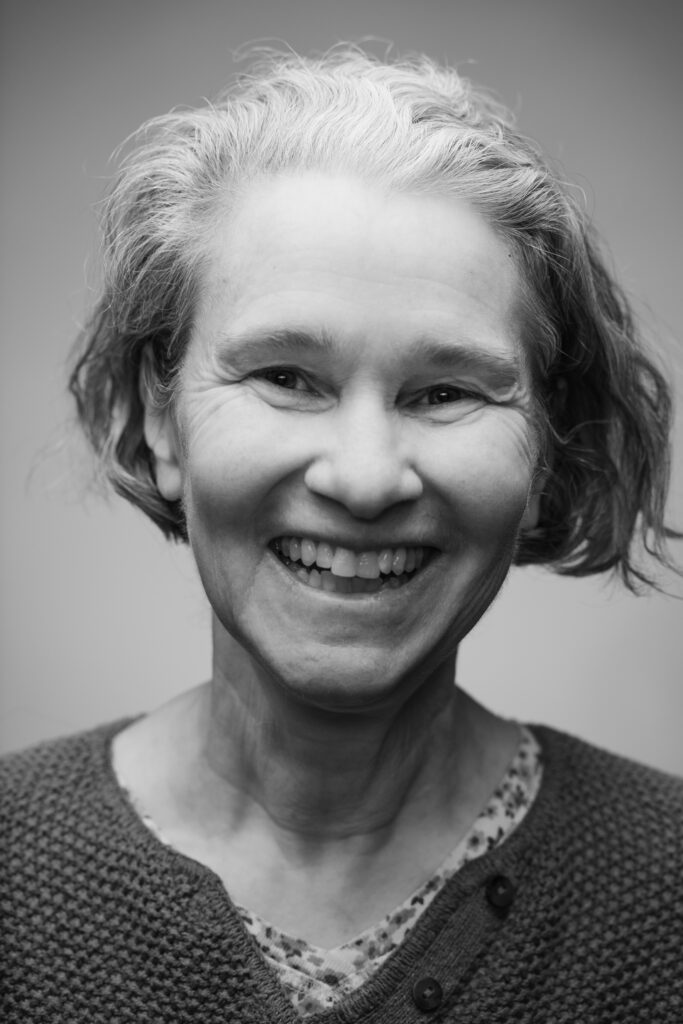Introduction by Mia Pohlman
Telling someone you look up to them involves risk. But, we believe in being straightforward in our admiration of others, letting people know when we think there is something cool about them. We also are always up for knowing another interesting person in our community, and it’s usually true that the people we think are awesome know other awesome people we don’t yet know.
So, to learn more about what the people we already know value, and to also meet new friends, we asked Kelly Downes, whom we admire, to ask someone she admires to sit down for a conversation. Here, we introduce you to Kelly, so she can introduce us to Edie. This conversation has been edited for the sake of space and coherency.
Arts Council of Southeast Missouri director, art educator and artist Kelly Downes’ actions align with her words. She is an advocate of equity and gives the raw, authentic version of herself. She works tirelessly and selflessly to create opportunities for others to be transformed by the arts as she has been, and, recognizing the privileges of her own life, uses them to create experiences for those who have not had access to the same opportunities. Her words are eloquent and wholehearted, as are her actions: Her life is a work of art. Here, she lets us listen in on her interview about centering prayer with Rev. Edie Bird.
————
Intro and Interview by Kelly Downes
If the conversations of my life were measured by how effortlessly Bob Dylan is referenced, I contest that my time spent with Reverend Edie Bird would qualify as one of the all-time greats. As I sat down to write this interview, I began to ruminate about where to begin. I scoured my bookshelves in a frenzy, desperately trying to find the book “Bob Dylan and Philosophy (It’s Alright Ma, I’m Only Thinking).” I thought an appropriate reference would include the chapter on Plato’s “Symposium” and the influence of the great Greek philosophers on Dylan’s many nuanced treatises on love.
The poetry of Reverend Edie Bird’s soul reminds me of Dylan’s song “Forever Young,” as it naturally radiates an expression of Divine Love. Hers is an affable wisdom, bolstered by a humbled and deeply-informed sincerity.
I came to know Edie through a centering prayer group on Monday nights. As it turns out, we have a lot more in common than our shared love of Dylan. We both grew up on the North Shore of Chicago as middle-class, blue collar kids in a bubbled world, awash in ostentatiousness. As the two of us sat at a table in a coffee house in Cape, we had effortless, fluid discussions about the holiness of Lake Michigan, the effects of the “Living Room War” on our collective awareness and the impact of the wisdom traditions on our respective spiritual paths.
While engaged in a back-and-forth discussion about the spiritual poverty that underlies social inequity, Edie recalled incidents that led her to seek interfaith solutions. She taught herself mindfulness at the age of 11. She studied psychology at Harvard in the late 1970s and early 1980s, and studied conflict transformation under Professor Herb Kelman, Harvard professor emeritus of social ethics. She went on to divinity school and began to work with interfaith organizations during the Gulf War, particularly in Jewish and Palestinian contexts.
As a minister of faith and the former pastor at Christ Episcopal Church in Cape Girardeau, Edie inherently understands the existential crisis we are all facing. She has turned toward suffering and has witnessed the collateral damage of a disconnected world. She has helped to lay the cornerstone of resolution in many lives. As she sits across from me, she smiles — an illuminated smile. She knows true faith requires opening inward, and that each of us is capable of developing a practice of resting in a place so saturated with God’s presence that we are somehow closer to it than we are to ourselves. She knows this place intimately, from the inside. Which is where my questions for her begin and end … somewhere deep inside the search for that one chapter of the book pertaining to love.
Can you give me an elevator pitch for the process of Centering Prayer?
If you can, visualize a circle within a circle within a circle, deepening toward the center. On the edges of the outer ring, there is a lot of activity and superficiality. The common mind. But as we move toward the center, there is a deepening toward “Christ Consciousness.” We move from ordinary awareness to spiritual awareness to divine awareness. And when we are in our center for long enough, we move from the center outward. In this, we keep reprocessing our true center, becoming both deeper and more spacious in awareness.
Can you describe the theology of a non-dual, Christ-centered heart?
I think of Matthew 18. What he is discussing is conflict resolution. The Greek translation, which is more accurate than the Latin translation, says, “… You have promised, through your well-beloved Son, that when two or three are gathered together in his Name, you will be in the midst of them.” To move into the middle is to come into relationship with Christ. With groups like the Quakers and the Mennonites, one had to move toward the center of relatedness both within themselves and among one another. If we are wounded, within ourselves or in our relationships, we have to treat from the space of Christ in the middle. We belong to that space. We exist within it. And the center of that consciousness becomes the field of consciousness. This mediating, non-dual presence is a safeguard against our own willfulness and ego.
How does a negative theology apophatic practice differ from a positive theology kataphatic practice, and what seems to be the focus of the Western Church?
I don’t think of the practices as different, but rather as complementary to one another. They reinforce one another. Again, the two are harmonized in the center. The apophatic practice is referred to as “the way of not knowing” or via negativa, seeking to define God by what it is not. Because the concept of God is beyond human comprehension, then it is easier to quantify God not by what it is, but what it is not. In this way, God is beyond our knowledge, and attempts to know it are beyond conception. The cataphatic practice is a celebration of the beauty of creation of life and love in its many forms. This is when we affirm that “God is Love” or “God is Silence.” Both practices are necessary. God is imminent. But God is also transcendent.
The Western Church teaches consumerism as the dominant religion, and by that, I mean that we tend to treat the Church as a commodity for a state or a feeling. Sometimes, it is security. But when we are really listening, we are not seeking security, but a love of truth.
Can you speak to the concept of Lectio Divina?
This is known as a divine reading. The process is to read a passage of a scripture, holy book or poem slowly. This process first relates to the slowing of mental activity. But as we continue to recite the words, we begin to inquire about the spaces where the text lands, until we move into the heart and our awareness of the non-dual Christ. Words that carry sacred power, announce out loud, lectio, so that the whole body is involved. You are the vibration of this invitation into cosmic awareness.
What is the method behind centering prayer?
It is the field of practice of how you show up in the world.
Where does one begin?
Bob Towner leads a group at 8:30 a.m. every Saturday at Christ Episcopal Church. Chuck Burns leads a group at St. Vincent’s at 5:30 p.m. every Thursday, and of course, there is Centering Prayer with Steve Essner via Zoom every Monday. You can email steveessner@gmail.com to get connected to the free group.


